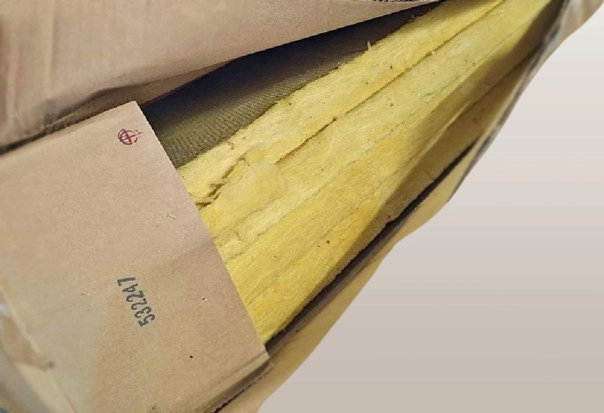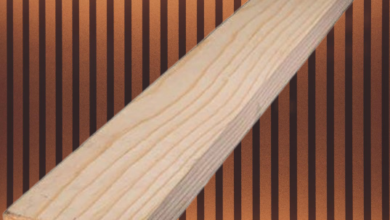Owens Corning 703 vs 705

When choosing the best fiberglass board for acoustic insulation, the little things matter a lot. The 703 and 705 products from Owens Corning are unique in the market because they are designed to meet particular needs and environments.
Knowing the distinctive qualities of each will enable you to make the best decision possible, guaranteeing cost-effectiveness and peak performance for your particular use case.
Corning, Owens 703
The lightweight, stiff fiberglass board Owens Corning 703 is made to absorb sound without being overly bulky.
It’s a common option in settings where there is a need for efficient noise reduction but limited space. Because of its adaptability, it works well in studio, commercial, and residential settings where acoustics are important.
Corning 705 Owens
Owens Corning 705, on the other hand, provides a denser and more durable solution. This board is designed for locations that need stronger sound absorption and blocking capabilities.
Its more robust construction is ideal for commercial spaces and high-traffic areas where acoustic control and durability are essential.
1. Physical Characteristics
Owens Corning 703 and 705’s physical attributes have a direct impact on how well they work and how applicable they are in different situations.
To better understand how they fit into various acoustic solutions, let’s examine their material composition, density, and thickness options.
Owens Corning 703: Composition of Materials
Long, thin glass fibers joined by a thermosetting resin make up Owens Corning 703. High resilience and flexibility make this composition perfect for efficient sound absorption.
- Choices for Density and Thickness
The 703 boards have a standard density of roughly 3 pounds per cubic foot and are available in a range of thicknesses, usually 1 to 4 inches.
This range makes it a flexible option for a variety of applications by enabling customized acoustic performance in various contexts.
Owens Corning 705: Composition of Materials
Glass fibers make up Owens Corning 705, just like the 703, but it’s bound with a more robust, rigid resin. This produces a firmer, denser board that performs well in settings where durability and sound control are required.
- Choices for Density and Thickness
Typically ranging in thickness from 1 to 2 inches, Owens Corning 705 boards have a higher standard density of 6 pounds per cubic foot. Better sound-blocking properties are offered by this higher density, especially in noisy environments.
2. Acoustic Performance
Determining the efficacy of Owens Corning 703 and 705 in diverse settings requires an understanding of their acoustic performance.
Their sound absorption coefficients and the ideal frequency ranges for their best performance will be discussed here.
Sound Absorption Coefficients for Owens Corning 703
Owens Corning 703 has outstanding sound-absorbing capabilities. The Noise Reduction Coefficient (NRC), which for a 703 varies from 0.70 to 1.00 based on thickness, is a measure of the board’s noise-reducing capacity.
These numbers show a high level of sound absorption efficiency over a wide range of frequencies.
- The ideal range of frequencies
The 703 board is perfect for environments like offices or recording studios where speech clarity is crucial because it is especially good at absorbing mid- to high-frequency noise. Its operation at these frequencies contributes to better sound clarity and less echo.
Sound Absorption Coefficients for Owens Corning 705
Although Owens Corning 705 is generally more effective at lower frequencies than 703, it still has strong sound-absorbing capabilities.
The 705 boards offer strong noise control with an NRC of 0.75 to 1.15, especially in settings where low-frequency sound is common.
- The ideal range of frequencies
Engine rooms and theaters, which have lower frequency issues, are well-suited for 705’s denser makeup.
In areas that are prone to bass-heavy noise, its capacity to control these frequencies contributes to the preservation of a clearer acoustic environment.
3. Uses and Adequacy
Beyond just their acoustic qualities, Owens Corning 703 and 705 are effective due to their practical uses and environmental suitability.
Let’s examine each product’s strengths and the degree of installation flexibility or rigidity it provides.
Owens Corning 703: Suggested Applications
In settings where efficient sound absorption is needed without the bulk or weight of denser materials, Owens Corning 703 is frequently utilized.
This includes offices, where lowering background noise is required to preserve a productive environment, and recording studios, where clear acoustics are crucial.
- Flexibility in Installation
Owens Corning 703 panels are easy to handle and install because they are lightweight and semi-rigid.
They offer versatility in design and placement because they are simple to cut to fit different spaces and mount using a variety of techniques, such as mechanical fastening or adhesive applications.
Owens Corning 705: Suggested Applications
Owens Corning 705 is perfect for locations that need sound absorption and can tolerate frequent impact or heavy use because of its denser and more durable construction.
Because of this, it can be used in theaters, busy public spaces, and educational institutions where acoustics and durability are important considerations.
- Durability and Rigidity of Installation
Because of its denser composition, Owens Corning 705 is less flexible than 703 and needs to be handled more carefully when being installed.
For stability and performance in demanding environments, it frequently requires more secure mounting systems, like framed enclosures.
4. Sturdiness and Management
Important considerations are Owens Corning 703 and 705’s long-term performance and simplicity of installation. Both the immediate application procedure and the insulation’s long-term resistance to environmental influences are impacted by these characteristics.
Easy Material Handling and Installation with Owens Corning 703
The ease of handling and installation of Owens Corning 703 boards is well-known. They can be readily cut to size with basic tools and fitted into irregular spaces with little effort due to their lighter weight and flexibility.
Because of its ease of use, it is a popular option for both professional installations and do-it-yourself projects.
- Lifespan in Normal Circumstances
Under normal indoor conditions, 703 boards hold their shape and effectiveness over time, despite not being as rigid or dense as other insulation materials.
They are resistant to settling and sagging, so they don’t need to be replaced very often and maintain a constant acoustic performance.
Issues with Material Handling and Installation for Owens Corning 705
Because they are heavier and denser, Owens Corning 705 boards are more difficult to handle and install.
Due to their rigidity, they must be cut with stronger tools and installed with greater care to guarantee a tight fit and satisfactory performance.
- Improved Features for Durability
The durability of the 705 boards is excellent. They are made to resist harsher environmental factors, such as increased humidity and physical strain.
Because of this, they have a longer lifespan and require less maintenance, making them ideal for high-traffic areas or applications where they might be subjected to greater wear and tear.
5. Economic Efficiency
Cost effectiveness is the last factor to take into account when contrasting the Owens Corning 703 and 705 models. This includes the initial cost of purchase as well as ongoing savings due to longevity, upkeep requirements, and application suitability.
The price per square foot for Owens Corning 703
Compared to its denser counterpart, Owens Corning 703 is typically less expensive per square foot. This makes it a desirable choice for projects with a tight budget where a lot of material is required without sacrificing the quality of sound absorption.
- Cost-benefit evaluation for common uses
The 703 boards provide exceptional sound absorption for common uses like home studios or office spaces, which can greatly enhance the acoustic quality of a room.
Given their affordable price and the advantages they offer in terms of noise abatement and general acoustic control, Owens Corning 703 is an affordable option for a variety of settings.
The price per square foot for Owens Corning 705
Generally speaking, Owens Corning 705 is more expensive per square foot because of its increased durability and density. This illustrates its capacity to manage more demanding applications that call for a more resilient, long-lasting material.
- Cost-benefit evaluation in situations with increased demand
Owens Corning 705’s higher cost is justified in settings like theaters, schools, or public buildings where both high-performance sound absorption and material durability are necessary.
It is a smart investment for high-demand settings because the long-term advantages of fewer noise complaints and fewer replacements due to wear and tear can result in more significant overall savings.
In conclusion
When choosing between Owens Corning 703 and 705 fiberglass boards, take your space’s needs into account.
Owens Corning 703 provides flexibility and affordability, making it the perfect choice for settings that need easy installation and moderate sound control.
Conversely, Owens Corning 705 is ideal for demanding environments and high traffic areas due to its exceptional durability and strong sound absorption.
Since every board has advantages, you should match your selection to the physical and acoustic requirements of your application.

